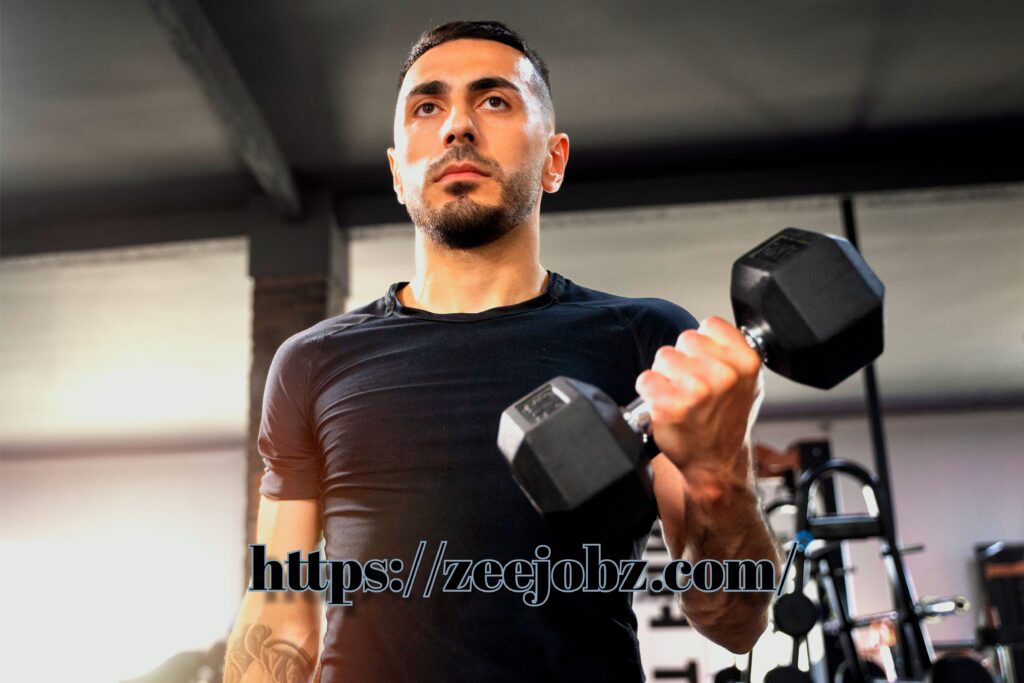Introduction to Chest Workouts
Chest Workouts, close to health, is paramount to growing a strong upper body. Whether your goal is to develop style, improve strength, or increase overall athletic performance, incorporating powerful chest routines into your routine is essential. This article delves into the intricacies of chest exercises and provides a complete guide to studying these athletic activities for optimal gains.
Importance of Chest Workouts
The pectoral muscles, the overall important and small pectoral muscle, are not the simplest vital to better body strength, but they additionally contribute to extended practical fitness. Well-developed chest muscle groups improve posture, beautify maximum body strength, and expand the ability to perform various bodily duties. Incorporating a variety of chest exercises ensures balanced muscle development, reduces the risk of injury, and promotes everyday frame symmetry.
Anatomy of the pectoral muscles
Understanding the anatomy of pectoral muscle tissues is essential to designing effective Chest Workouts. The pectoralis major muscle, the largest muscle in the chest, has two elements: the clavicular head (upper chest) and the head of the sternum (lower chest). The small pectoral muscle (pectoralis minor), located below the vital pectoral muscle, plays an auxiliary function in shoulder actions.
Key exercises for Chest Workouts

Bench press variations
- Flat Bench Press: This conventional exercise targets the entire chest and emphasizes the number one pectoral muscles. It can be performed with a barbell or dumbbell.
- Incline Bench Press: This model specializes in the upper chest and improves the critical pectoralis major head.
- Decline Bench Press: This exercise focuses on lowering the chest and works the sternal head more effectively.
Push-up variation
- Standard push-ups: These push-ups display the entire chest and, thanks to their simplicity and efficiency, are the basis of movement activities on the chest.
- Push-ups: The purpose is to lower the chest by shifting the emphasis to the sternal head.
- Decline Push-Ups: These reputations have a better chest, and strengthen the collarbone.
A variation of the chest fly
- Flat Bench Chest Fly: This exercise stretches and contracts the Chest Workouts and promotes hypertrophy.
- Chest Decline: This variation targets the upper chest and improves muscle definition.
- Decline Chest Fly: This specializes in lowering the chest and ensures balanced muscle development.
Chest exercise with a cable
- Cable crossovers: They offer consistent anxiety, successfully targeting the pectoral muscle tissue from multiple angles.
- Cable Fly: This exercise complements the inner chest and adds muscle symmetry.
Structuring chest training
To maximize the effectiveness of movement activities of the chest, it is necessary to structure them correctly. A well-rounded daily chest workout consists of a set of compound and isolation weight-bearing actions, multiple angles and modern overload. Here is a sample chest workout plan:
Warm
- 5-10 minutes of moderate aerobics
- Dynamic stretching with a focus on the chest and shoulders
Exercise routine
- Flat Bench Press: four sets of 8-12 reps
- Dumbbell dip: three units of 10-15 repetitions
- Decline Bench Press: three sets of 10-15 reps
- Cable transitions: 3 units of 12-15 repetitions
- Push-ups: three sets to failure
Cold
- Static stretching focusing on the chest and shoulders
- 5-10 minutes of light aerobics
Common mistakes when doing Chest Workouts
Avoiding common mistakes in chest sports activities is vital to stopping accidents and ensuring strong muscle development. Here are some pitfalls to explore:
- Neglecting proper form: Poor form can result in injury and suboptimal muscle activation. Ensure proper posture and controlled movements.
- Overtraining: Relaxing the Chest Workouts is important for recovery and volume. Avoid excessive frequency and amount of training.
- Ignoring Variation: Sticking to the same body parts can cause plateaus. Include amazing angles and physical video games to constantly increase your muscle mass.
- Neglecting to warm up and cool down: Skipping these points can increase the risk of injury and reduce the effectiveness of the exercise. Always include a proper warm-up and cool-down in your routine.
Nutrition and Recovery for Chest Workouts

Optimal vitamins and recovery are important to maximize the benefits of chest Workouts. Adequate protein intake is essential for muscle regeneration and growth. Include lean protein sources such as poultry, fish, tofu and legumes in your diet. Carbohydrates provide energy for extreme physical games, while healthy fat helps general fitness. Staying hydrated and getting enough sleep are also essential for recovery.
The role of progressive overload in Chest Workouts
Progressive overload is the cornerstone of muscle growth and strength development. Gradually increasing the load, repetition, or depth of chest exercises guarantees unexpected improvement. Track your workouts, set capacity goals, and push yourself beyond your comfort zone. Progressive overload combined with proper form and balanced vitamins leads to huge improvements in electrical energy and chest size.
Read More: The Enigma of bl_faceless: A Digital Journey
Properly incorporating chest exercises right into your full body routine.
Integrating chest physical games into a repetitive complete framework guarantees balanced muscle development and typical energy. Here is an example of a weekly workout schedule that includes chest exercises:
Monday: Chest and triceps
- Flat Bench Press
- Incline Dumbbell Press
- Cable switches
- Tricep Dips
Wednesday: Back and biceps
- Deadlifts
- Cranks
- Folded lines
- Bicep curls
Friday: Legs and Shoulders
- Squats
- Lunges
- Shoulder pressure
- Side jacks
Sunday: Chest and Core
- Reject the Bench Press
- Cranks
- Chest flies
- Plank variations
Chest Workouts for different fitness levels
Chest exercises can be tailored to fit any type of fitness level, from beginners to advanced lifters. Here are some recommendations for each stage:
Beginners:
- Focus on learning simple physical games like push-u. S.A. and bench press.
- Start with lighter weights and increase the intensity regularly.
- Prioritize proper form and attitude.
Intermediate:
- Include a variety of sports activities and angles.
- Use light weights and aim for 8-12 reps with a constant set.
- Visualize your current overload and track your progress.
Advanced:
- Challenge yourself with heavy weights and complicated actions.
- Include advanced strategies such as throws and supersets.
- Keep moving as usual to avoid the platforms.
Holistic Benefits of Chest Workouts
Strong chest muscle mass improves posture and reduces the risk of shoulder pain and vice versa. In addition, they increase your normal overall performance in various physical activities, from lifting heavy objects to playing sports. In addition, the chest accelerates the metabolism, supports the breakdown of fats and contributes to a slimmer figure.
Benefits of Chest Workouts
Engaging in a daily chest workout offers several benefits beyond just a sculpted chest. One of the number one benefits is the development of peak body energy, which is essential for everyday sports and improving standard sports performance. In addition, strong chest muscles contribute to better posture by supporting the shoulder girdle and reducing the risk of injury. Chest exercises can also beautify your metabolism, help burn fat and sell a leaner figure.
Basic chest exercises
When it comes to chest exercises, high-quality sporting events are essential because of their effectiveness in targeting the muscle tissues of the chest. The bench press, whether with or without a barbell or dumbbell, is a basic exercise that engages the entire chest. The incline puts more pressure on the target’s upper chest, while the decline puts pressure on the target’s lower chest. Push-united positions are any other flexible exercise that can be modified to increase depth and target different parts of the chest. Incorporating variations consisting of big grip, close grip, and plyometric push.
Advanced chest training techniques
For those looking to take their chest training to the next level, advanced school strategies can provide an important stimulus for further growth. Techniques along with descending units, supersets, and forced reps can add depth to your exercise routines and sell muscle hypertrophy. Drop sets involve performing an exercise to failure, then lowering the load and holding for more repetitions. Supersets integrate two sports that return without rest and target the same or amazing muscle agencies. Forced Replay features a school companion to help you complete more retakes than fail. These techniques can help break through plateaus and similarly stimulate muscle gains.
The importance of proper form and technique
Maintaining proper form and attitude at certain points in your chest routine is essential to avoid accidents and ensure maximum muscle engagement. Frequent mistakes include again excessive arching in the path of bench presses, which allows the elbows to overextend and the use of momentum to increase the load. It’s important to keep your shoulders back and down, engage your core, and use a controlled type of movement.
Chest Workouts for different fitness levels

Chest Workouts can be adapted to fitness super health ranges, from beginners to advanced lifters. Beginners primarily need basic physical games along with pressing unified stances and gentle bench presses to gain basic energy and ensure proper form. As electricity and confidence boom, incorporating more challenging sports and techniques can embellish muscle development. Intermediate and better lifters can benefit from a variety of training programs that consist of unique angles, rep levels, and advanced strategies. Regular cycling of the chest through unique phases of training (eg, strength, hypertrophy, endurance) can also optimize long-term development.
Regeneration and rest for optimal chest growth
Rest and healing are certainly equally important because the workouts themselves are close to a muscle boom. After an extreme chest workout, your muscle tissues need time to recover and strengthen. Incorporating rest days into your training schedule and getting enough sleep are essential for recovery. Active recovery that includes gentle stretching or low-intensity activities can also help reduce muscle soreness and increase flexibility.
Creating a balanced chest workout routine
Designing a balanced chest workout routine involves incorporating different wearable sports that target unique components of the chest, using unique angles and equipment. A normal routine may include a combination of compound movements such as bench presses and isolated body sports such as flies. It is very important to distinguish between repetition phases and weights used to consistently engage muscle groups. Ensuring a proper warm-up and funky-down, in addition to integrating mobility and flexibility to wear to events, can embellish standard performance and prevent injuries. Regularly evaluating and adjusting your routine primarily based on development and dreams can keep your chest efficient and attractive at sporting events.
Conclusion
By learning the anatomy of the chest muscle tissue, covering key sports, avoiding common mistakes, and prioritizing nutrition and recovery, you can maximize the benefits of your chest workout. Whether you’re a beginner looking to build core strength or an advanced lifter looking to make significant muscle gains, chest exercises offer a path to a stronger, more defined taller frame. Take the challenge, live consistently and watch your health club efforts translate into great results. Remember, the search for an effective chest is a marathon, now not a sprint – live devotedly and the rewards will suit.
Frequently Asked Questions About Chest Workouts
1. How often must I do chest exercises?
It’s generally encouraged to educate your chest muscular tissues 1-2 times in step with week, depending on your typical exercising cut-up and healing ability. Ensure you permit a minimum of forty-eight hours of rest among chest workout routines to facilitate good enough muscle healing.
2. Can I educate my chest if I have a shoulder ache?
If you have got shoulder ache, it’s crucial to be careful and discuss with a healthcare expert earlier than continuing chest workout routines. Modifying sporting events to lessen shoulder strain, the usage of lighter weights, and specializing in the right shape can help. Exercises like ground presses and neutral-grip dumbbell presses may be gentler at the shoulders.
3. How can I increase the size of my top chest?
To goal the upper chest, include incline presses (barbell or dumbbell) and incline flies into your habitual. Adjusting the bench to a 30-forty five-degree angle can efficiently engage the higher part of the pectoralis main.
4. Should I do heavy weights or high reps for Chest Workouts?
Both heavy weights (with lower reps) and lighter weights (with better reps) have their area in chest training. Combining both procedures with your habitual can stimulate muscle boom and staying power. For example, alternating between electricity-focused (3-6 reps) and hypertrophy-targeted (8-12 reps) sets can yield the foremost consequences.
5. How essential is form in Chest Workouts?
Proper shape is important in chest workouts to maximize muscle engagement and minimize the threat of injury. Common mistakes consist of arching the lower back excessively, flaring the elbows too much, and the use of momentum. Focus on managed movements, maintaining the shoulders retracted and down, and retaining a strong center.
Read More: Pitchfork Knot: Versatility and Craftsmanship in Knot-Tying



